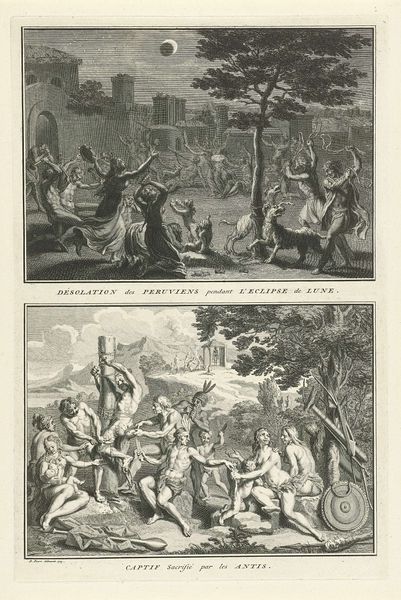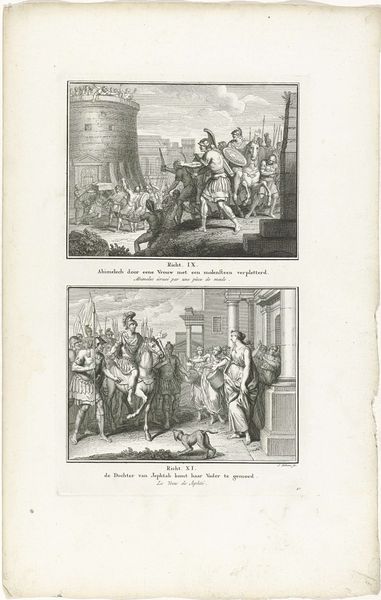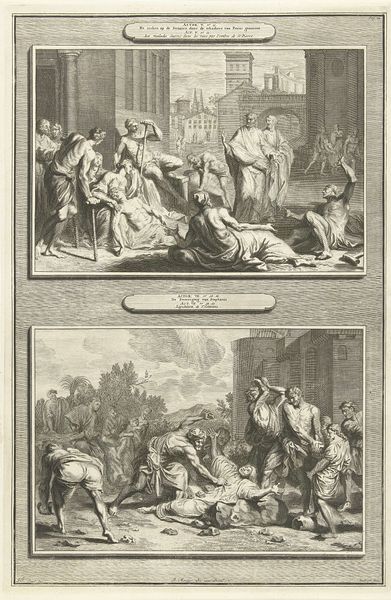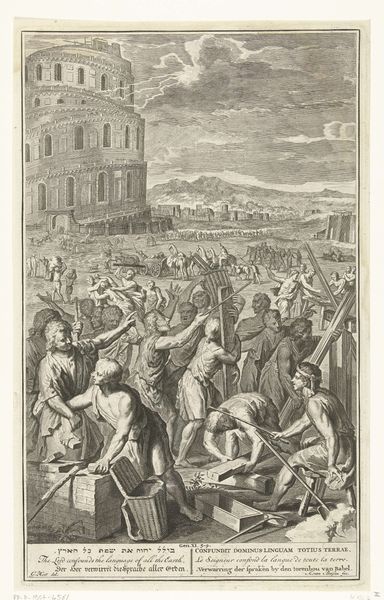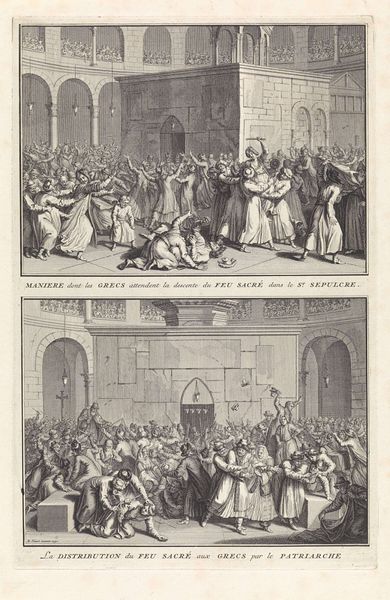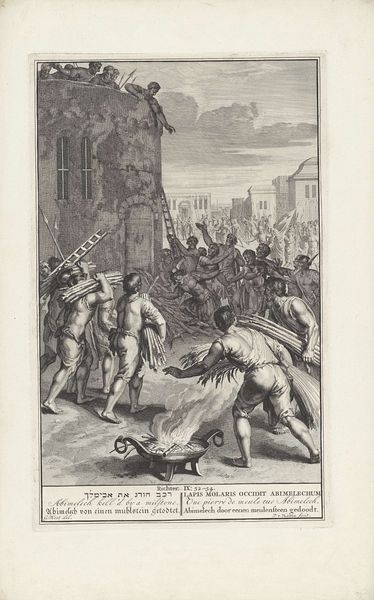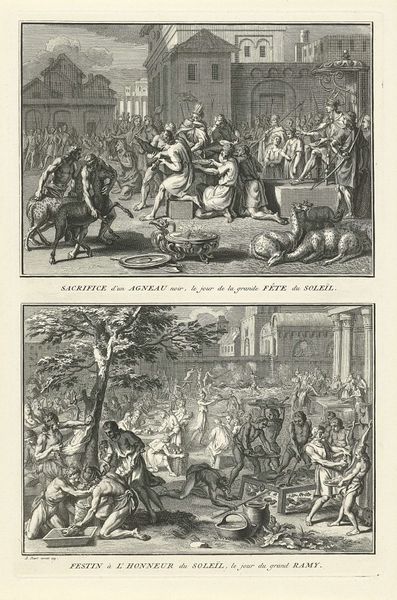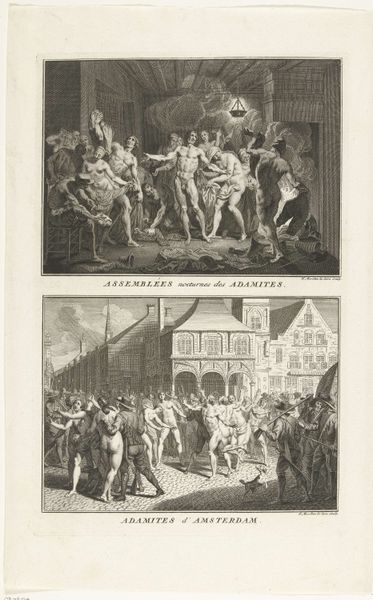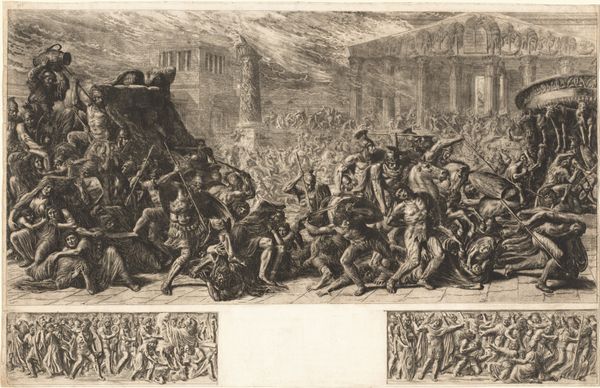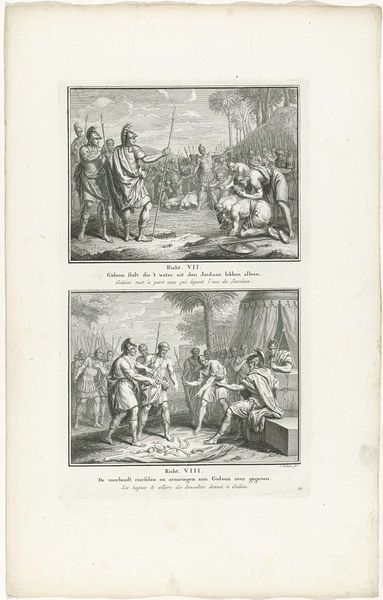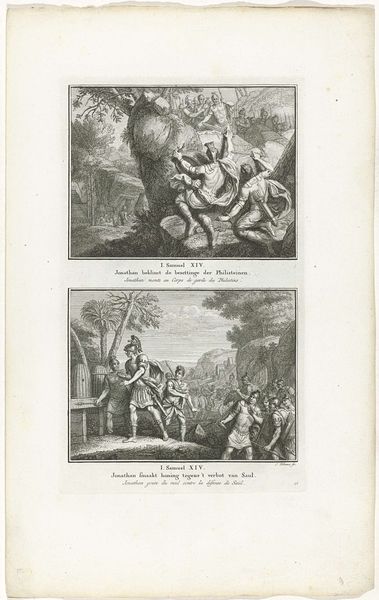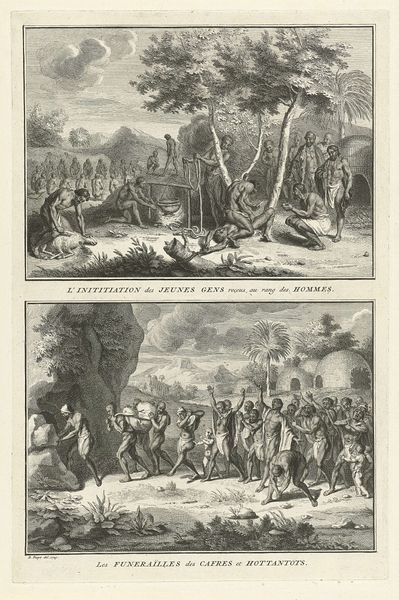
print, engraving
#
narrative-art
# print
#
old engraving style
#
perspective
#
engraving
Dimensions: height 331 mm, width 219 mm
Copyright: Rijks Museum: Open Domain
Curator: Looking at this print, I’m immediately struck by the sheer density of detail and the implied chaos of the scenes depicted. It's titled "Religious Ceremonies of the Original Inhabitants of Peru," created in 1722 by Bernard Picart, and held here at the Rijksmuseum. Editor: It feels like a carefully orchestrated chaos, doesn't it? The artist is showcasing "otherness" but seemingly through a Westernized lens. I find myself wondering, what exactly were Picart's sources and motivations in presenting Indigenous ceremonies in this manner? Curator: Undoubtedly a key question. It’s an engraving, which already tells us something about the intended audience – these prints were designed for wide circulation and consumption. Consider the layering of perspective; Picart employs it skillfully, directing our gaze through various figures and activities, but toward what end? Editor: I notice that it is split into two distinct scenes, contrasting a more somber ritual involving fire with what appears to be a celebratory drinking ceremony, is it? The iconography is layered with these assumed representations. It feels performative, even for ritualistic observation, what would this be telling 18th-century viewers of Peru's inhabitants and their traditions? Curator: The division creates a diptych effect, highlighting distinct aspects of the Sun Festival. In the top scene, note the reverence depicted around the "sacred fire," the implied purification. The lower scene certainly suggests communal celebration, maybe of offering and partaking. What resonates for me is how Picart chooses to portray gesture—hands raised in supplication, offerings presented—they tap into universal expressions of devotion, even if the specifics remain obscure or mediated by the artist’s own interpretation. Editor: But that mediation is exactly the point! How do we unravel the cultural baggage, the implied judgment embedded in this European rendering of Indigenous practices? It's a potent example of how visual culture can reinforce or challenge existing power dynamics. Curator: Absolutely. Even down to the figures, they could represent the cultural misunderstandings of their society and are rendered with precision; the texture of fabric, expressions of apparent joy, all meticulously etched. It’s a captivating yet fraught piece, ripe with historical and symbolic complexity. Editor: Agreed. It leaves me contemplating the gaze itself – whose story are we truly seeing here? Curator: A question that should persist long after we leave this gallery. Editor: Precisely. It pushes us to engage critically with not just what is presented but *how* and *why*.
Comments
No comments
Be the first to comment and join the conversation on the ultimate creative platform.
